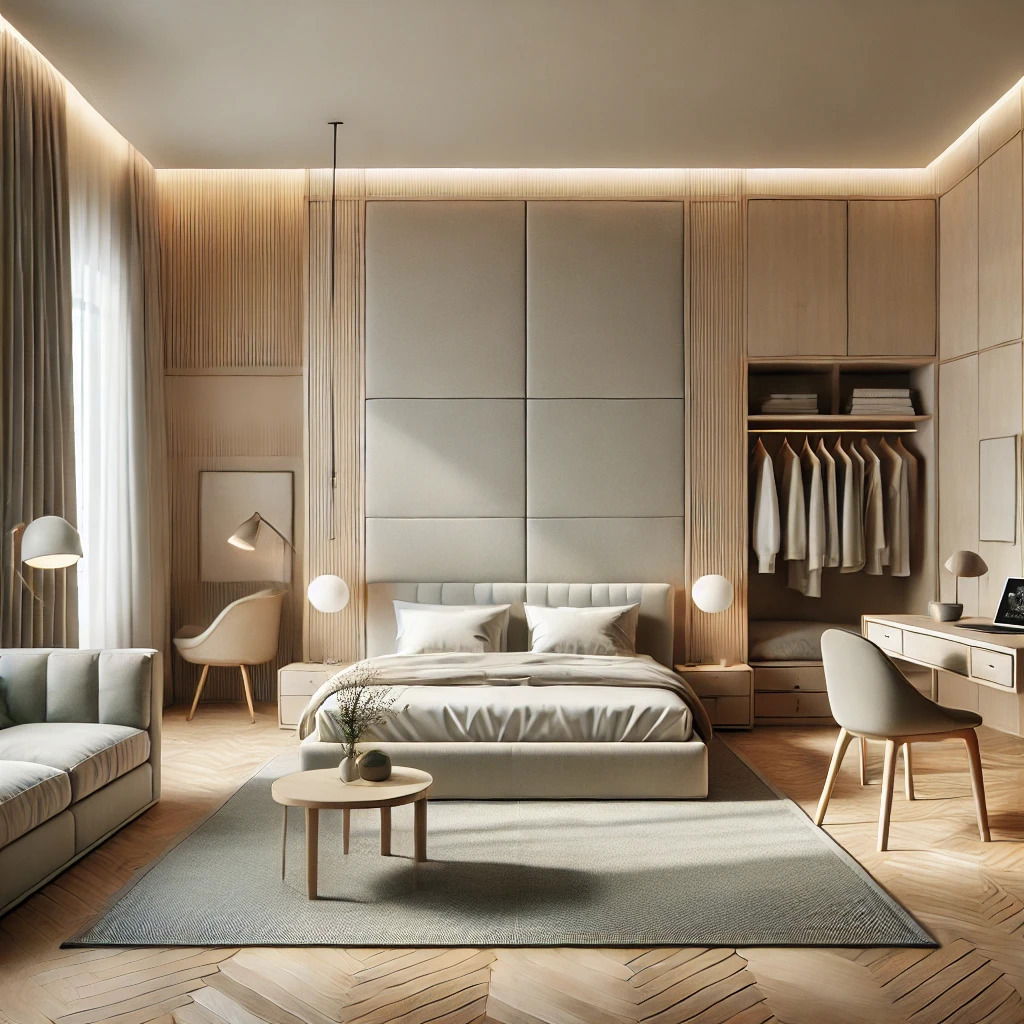In the world of hospitality, the aesthetics and design of environments play a crucial role in guaranteeing a unique experience for guests. As travellers' expectations evolve, hotels, B&Bs, farmhouses and boutique hotels must adapt to new design trends to attract and retain their guests. In this article, we will explore emerging color palette trends in the hospitality industry, providing tips on how these changes can be used effectively to improve the atmosphere and comfort in your accommodations.i.
Topic of this article:
- The importance of color palette
- Trends that have emerged in interior design
- Implementation of trends in your spaces
- Final reflections
The Importance of Color Palettes
In the modern age, first impressions can make the difference between an unforgettable stay and one that is quickly forgotten. Colors have the power to evoke emotions and create atmospheres. In a hotel or B&B, colors can influence the perception of luxury, comfort and hospitality. A farmhouse with natural tones can make guests feel connected to nature, while a boutique hotel might opt for bold colors and innovative design to communicate a unique and personalized experience.
How Color Psychology Influences Guests
Colors have a profound impact on the human senses, influencing emotional states and behaviors. Let's see how different shades can affect guests:
- Blue and Green: These colors are associated with calm and relaxation. Using them in bedrooms or relaxation areas can promote an atmosphere of serenity.
- Orange and Yellow: These warm tones evoke feelings of energy and welcome. They are ideal for common areas such as living rooms and restaurants.
- Red: Often associated with passion and dynamism, red should be used sparingly, preferably in details or accessories.
- Neutrals: Shades like grey, beige or white help keep a space elegant and versatile, easily customizable with pops of bright color.
Trends Emerging in Interior Design
Let's explore some of the emerging trends in color palettes that are making their way into the hospitality industry.
Natural and Earth tones
With a growing focus on sustainability and returning to nature, many accommodations are choosing palettes that reflect natural hues. Warm browns, forest greens and beiges are chosen to give an organic and relaxing atmosphere, perfect for farmhouses that want to underline their connection with nature. These palettes not only improve aesthetics, but also help create environments that make guests feel more at peace and relaxed.
Therapeutic Colors and Wellbeing
Post-pandemic, health and well-being have become a priority. Some boutique hotels are starting to incorporate color palettes that promote mental and physical well-being. Shades of soft blues, light yellows and delicate greens can create a therapeutic environment that improves guests' mood. These colors can also be combined with natural elements such as green plants and sustainable materials for an even more relaxing effect.
Bold Contrasts and Geometric Patterns
Many guests today are looking for a unique and memorable experience. To meet this demand, some boutique hotels are experimenting with bold color combinations accompanied by geometric patterns. Shades of black, red and gold can add a touch of drama and luxury, while geometric patterns offer a modern and artistic accent, making any space distinctive and memorable.
Implementing Trends in Your Spaces
How can hotels, B&Bs, farmhouses and boutique hotels effectively incorporate these color trends into their spaces? Here are some practical tips:
Personalize Without Exaggerating
It's crucial to balance bold colors with neutral ones to avoid overwhelming guests. Using colorful accents in details like pillows, artwork or vases can add vibrancy without compromising the harmony of the room.
Choose Materials That Stand Out
Combining the right shades with materials such as wood, stone, metals or natural fabrics can further enhance the desired effect. For example, blue combined with dark wood furniture can create an elegant and contemporary environment.
Involving Design Professionals
Relying on an interior designer or industry experts can help select the right palette for specific spaces. These professionals can offer valuable advice on how to combine colors for maximum visual and functional impact.
Final Reflections
The ability to quickly adapt to changing design trends is critical in the hospitality industry. Whether it is a small B&B or a luxury boutique hotel, the adoption of modern and focused color palettes can improve the guest experience and consolidate the reputation of the accommodation. Remember that, in this industry, attention to detail is not only recommended, but essential to excel. Consider color palettes as a powerful tool for telling your story and defining the identity of your space. Embrace trends with a personal touch, and your guests will thank you for coming back. By successfully implementing these trends and leveraging color psychology, you can offer your guests an experience they won't soon forget. After all, the ultimate goal is to create spaces that not only meet expectations, but exceed them, inviting guests to return.



